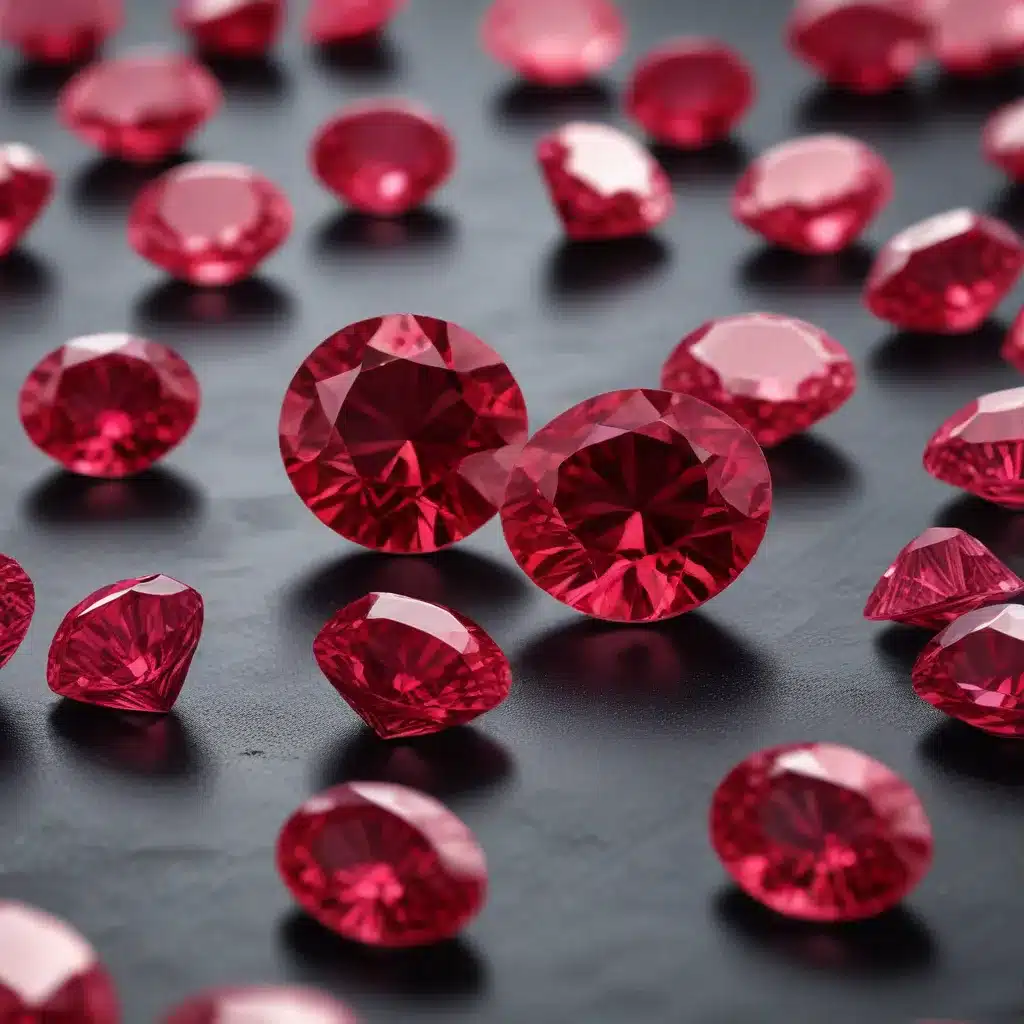
Synthetic gemstones have captivated the world with their brilliance, durability, and cost-effectiveness. Among these remarkable creations, the synthetic ruby stands out as a shining example of human ingenuity and the pursuit of perfection. At Shelby Gem Factory, we take great pride in exploring the intricate world of synthetic ruby, from its pioneering synthesis techniques to the science behind its vibrant hues.
The Emergence of Synthetic Gemstones
The desire to recreate the beauty of natural gemstones has long been a driving force in the gem and jewelry industry. As early as the 19th century, scientists and innovators began experimenting with methods to produce artificial gems that could rival their natural counterparts. The advent of the flux method and Verneuil method paved the way for the large-scale production of synthetic rubies, opening up new possibilities in the world of gemology.
The Pioneering Techniques in Ruby Synthesis
The flux method, developed in the late 19th century, involved dissolving aluminum oxide in a molten flux, typically a mixture of lead oxide and silicon oxide. As the flux cooled, small ruby crystals would form, mimicking the structure and composition of their natural counterparts. This technique allowed for the production of high-quality synthetic rubies, albeit in relatively small quantities.
The Verneuil method, introduced in the early 20th century, revolutionized the synthetic ruby industry. This process involved melting aluminum oxide and chromium oxide in an oxyhydrogen flame, creating a molten drop that would then solidify into a synthetic ruby boule. The Verneuil method enabled the production of larger, more consistent synthetic rubies, making them more accessible and affordable.
Advancements in Ruby Production
In recent decades, the development of hydrothermal synthesis has further expanded the capabilities of synthetic ruby production. This method involves growing ruby crystals in a closed, pressurized system, using a nutrient solution and a seed crystal as a starting point. Hydrothermal synthesis allows for the creation of larger, more homogeneous synthetic rubies, with the potential to tailor their properties to specific applications.
Chemical Makeup and Crystalline Structure
Synthetic rubies are composed primarily of aluminum oxide (Al₂O₃), just like their natural counterparts. The key difference lies in the presence of chromium (Cr³⁺) ions, which replace a small percentage of the aluminum atoms in the crystal structure. This substitution is what gives ruby its distinctive red color, as the chromium ions absorb certain wavelengths of light and reflect the longer, redder wavelengths.
The crystalline structure of synthetic ruby is identical to that of natural ruby, consisting of a trigonal system with a hexagonal unit cell. This shared crystalline structure is a testament to the precision and control achieved in the synthetic ruby manufacturing process.
Applications of Synthetic Ruby
The versatility of synthetic rubies has led to a wide range of applications, both in the jewelry and industrial sectors. In the gem and jewelry industry, synthetic rubies are highly valued for their beauty, durability, and cost-effectiveness, making them a popular choice for engagement rings, pendants, and other fine jewelry pieces.
Beyond the realm of jewelry, synthetic rubies find use in numerous technological and industrial applications. Their exceptional hardness (9 on the Mohs scale) and thermal conductivity make them ideal for use in precision instruments, lasers, and various electronic components. Synthetic rubies are also employed in abrasive tools, cutting and polishing devices, and specialized medical equipment.
Quality Assurance and Certification
Ensuring the authenticity and purity of synthetic rubies is of paramount importance in the gemstone industry. Rigorous testing and evaluation methods, such as spectroscopic analysis and refractive index measurements, are employed to distinguish synthetic rubies from their natural counterparts. Reputable certification bodies, like the Gemological Institute of America (GIA), play a crucial role in establishing grading standards and providing assurance to consumers.
Synthetic Ruby vs. Natural Ruby
While synthetic rubies share many physical and chemical properties with natural rubies, there are distinct differences that set them apart. Natural rubies are formed through a geological process that spans millions of years, often incorporating unique mineral inclusions and variations in color. Synthetic rubies, on the other hand, are created in a controlled laboratory environment, allowing for a more consistent and homogeneous appearance.
One key distinction is the presence of certain microscopic features, such as growth lines or “fingerprints,” which can help gemologists differentiate between natural and synthetic rubies. Additionally, advanced testing methods, including infrared spectroscopy and chemical analysis, can provide definitive identification of the gem’s origin.
Environmental Impact and Sustainability
The production of synthetic rubies, while offering numerous benefits, also raises important questions about environmental impact and sustainability. The energy-intensive nature of the manufacturing processes, as well as the potential for waste generation, has sparked a growing awareness of the need for more eco-friendly and responsible synthetic gem production.
Leading manufacturers, including Shelby Gem Factory, are actively exploring ways to reduce their carbon footprint, implement sustainable practices, and ensure the ethical sourcing of raw materials. This includes innovations in energy-efficient furnace designs, the development of recycling programs, and the adoption of sustainable supply chain management strategies.
Market Trends and Economic Implications
The rise of synthetic rubies has had a significant impact on the gemstone market, both in terms of supply and demand. The availability of high-quality, affordable synthetic rubies has democratized access to these captivating gems, allowing more individuals to incorporate them into their jewelry collections and personal adornments.
This shift in the market has also prompted a reevaluation of pricing structures and value perceptions. While natural rubies remain highly sought after for their rarity and unique geological histories, synthetic rubies have carved out a prominent niche, offering a more accessible and cost-effective alternative without compromising on quality or beauty.
At Shelby Gem Factory, we recognize the profound influence of synthetic rubies on the gem and jewelry industry. By delving into the remarkable journey of their creation, we aim to foster a deeper understanding and appreciation for these remarkable gems – from their scientific origins to their enduring allure.

